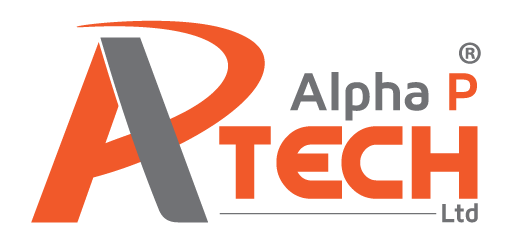Why Most Lead Magnets Fail with Senior Decision-Makers
In the world of B2B content marketing, lead magnets are often treated as checkbox exercises churned out to “capture leads” without much thought for who’s actually downloading them. The result? A sea of generic PDFs, shallow checklists, and recycled advice that any senior decision-maker can find for free with a quick Google search.
And here’s the truth: most senior buyers aren’t willing to hand over their email address for something that feels like a sales trap or offers little in return.
To cut through the noise, your lead generation strategies must do more than inform; they need to resonate. That means speaking the language of your audience, using the right tone, nuance, and sector-specific jargon that shows you genuinely understand their world. When your lead magnet reflects their challenges and mindset, it becomes more than a download — it becomes a signal of authority.
In this article, we’ll explore how to create content offers that use business storytelling, insight, and precision to earn trust, not just clicks.
What Is a Lead Magnet in B2B Marketing?
A lead magnet is a targeted piece of content or resource offered by a business, usually in exchange for a prospect’s contact details, such as an email address. In B2B marketing, it plays a crucial role in lead generation strategies by attracting the right leads, demonstrating expertise, and moving potential buyers further along the decision-making process.
Unlike generic blog posts or broad content, effective lead magnets are tailored to solve a specific problem for a specific audience. Examples include industry reports, interactive calculators, webinars, and templates. What sets a lead magnet apart is its precision and relevance. Through well-crafted business storytelling and insight-led content, lead magnets not only capture attention but also position your brand as a trusted authority within your niche.
What’s the Difference Between Gated and Ungated Lead Magnets?
Gated lead magnets are content offers that require users to complete a form (often collecting their email addresses) before gaining access. They’re typically used in lead generation strategies to qualify prospects, nurture leads, and move potential buyers further down the sales funnel.
In contrast, ungated lead magnets are freely accessible, with no barriers to entry. These are designed to build trust, demonstrate expertise, and improve visibility through SEO and organic sharing.
Gated content works best when the resource is highly valuable and the audience is closer to a buying decision. Ungated content, such as Salesforce’s open-access webinars or CXL’s AI persona generator, is ideal for reaching early-stage buyers, increasing brand reach, and strengthening your position through insightful B2B content marketing.
Whether gated or ungated, both formats have their place. The key is knowing when to prioritise lead capture and when to focus on visibility, credibility, and long-term brand engagement.
What Makes a Lead Magnet Feel ‘Cheap’?
A “cheap” lead magnet is easy to spot. It’s often a hastily thrown-together checklist, a surface-level eBook, or a templated guide that could apply to just about anyone. While it may tick a box in your lead generation strategy, it rarely earns the respect of senior decision-makers.
These types of offers come across as low-effort and lack the depth or specificity that more experienced buyers expect. In B2B content marketing, perceived effort equals perceived value, and if your lead magnet feels recycled or generic, it sends the wrong signal about the quality of your services.
Rather than positioning your business as a credible authority, it can make you seem unprepared or overly transactional. In short, if your content doesn’t reflect the standard of your thinking, your prospect may assume your delivery will be just as shallow. A strong lead magnet should embody your expertise, not dilute it.
What High-Value Buyers Actually Respond To
To win the attention of senior buyers, lead magnets must be more than just content. They need to serve as proof of thinking. In today’s saturated landscape, where every brand competes for visibility, high-value decision-makers are not drawn to filler. They look for clarity, confidence, and competence, all communicated through content that demonstrates a genuine understanding of their world.
Strong lead generation strategies prioritise actionable insight rather than vague advice. They provide market-specific context, showing a clear awareness of industry challenges and nuances. Most importantly, they offer evidence of results, such as case studies, benchmarks, or proprietary data, to build credibility and trust.
This is especially important in account-based marketing, where personalisation is key. A lead magnet tailored to the specific needs of a CFO will look very different to one aimed at a Marketing Director — and that relevance is what earns attention. If you’re new to ABM or want to refine your approach, you can explore our full guide to Account-Based Marketing for B2B success.
In B2B content marketing, quality outweighs quantity. The most effective lead magnets stand out because they are well-researched, original in perspective, and polished in execution. By treating your content as a form of business storytelling rooted in substance, you position your brand as a strategic partner instead of just another service provider.
6 Types of Lead Magnets That Feel Premium and Perform Like Sales Tools
Not all lead magnets are created equal — especially if your goal is to attract high-quality leads and position your business as a trusted advisor. Below are six types of premium lead magnets that not only feel valuable but also support your lead generation strategies by building credibility and sparking sales conversations.
-
Benchmarking Tools or Scorecards
These interactive tools allow prospects to compare themselves against industry benchmarks or best practices. Whether it’s a pricing maturity model or a performance assessment, they tap into curiosity and naturally lead to follow-up conversations about gaps and opportunities.
-
Insight Reports or Mini Whitepapers
Unlike generic data dumps, these reports offer distilled, context-rich analysis paired with your expert commentary. They work well in B2B content marketing when you need to show thought leadership on emerging trends or strategic shifts within a specific market.
-
ROI or Value Calculators
Perfect for service businesses, these tools help prospects quantify potential savings, efficiency gains, or revenue improvements. They serve as pre-justification for investment and are especially powerful when discussing longer sales cycles or high-ticket services.
-
Expert-Led Masterclasses or Video Briefings
Short, well-produced videos that unpack complex topics or frameworks are far more engaging than bloated webinars. These are a strong format for business storytelling, allowing you to demonstrate personality, clarity of thought, and practical insight in just a few minutes.
-
Case Studies
A refined case study in one or two pages, focusing on the challenge, the solution, and tangible results, can be far more effective than a long-winded success story. Use real client context and be specific — outcomes and lessons learned matter more than praise.
-
Strategic Playbooks or Frameworks
Give prospects a glimpse into how you think, not just what you do. A visual framework or actionable playbook not only teaches but also positions your approach as unique and worth exploring further.
Are free consultations or audits lead magnets?
While some marketers label free consultations or audits as lead magnets, they are not technically the same. A lead magnet is typically a low-barrier, scalable asset designed to attract and educate early-stage prospects. Consultations, on the other hand, are better viewed as conversion offers — best used when trust is already established and the prospect is ready to engage in a more tailored conversation.
Packaging and Positioning: Make It Look Like a Premium Product
Just because your lead magnet is free doesn’t mean it should look free. If you want to attract discerning buyers and elevate your lead generation strategies, the way you package and position your content matters just as much as the content itself. A templated PDF with a bland title and no author attribution won’t inspire confidence. Instead, think of your lead magnet as a premium product that represents the standard of your work.
Use a compelling, benefit-driven title that speaks to the reader’s specific challenge or aspiration. Invest in thoughtful design that reflects your brand identity, ensures readability, and offers a smooth user experience across devices. Where possible, attribute the content to a named expert with credentials, reinforcing authority and trust.
In B2B content marketing, presentation signals value. When your asset feels like exclusive insight rather than generic collateral, it elevates your positioning and makes prospects far more likely to engage with your wider offer.
Call to Action: Don’t Just Capture Emails — Start Meaningful Conversations
A strong lead magnet shouldn’t just capture contact details — it should open the door to meaningful conversations. Rather than relying on generic calls to action like “Download now” or “Contact us,” consider offering more contextual next steps that align with the prospect’s interest. For example, a prompt like “Want to explore how this applies to your business?” can feel more personalised and less sales-driven.
As part of your lead generation strategies, these light-touch follow-ups -such as a guided walkthrough, a tailored resource, or a short follow-up email sequence- can help move prospects closer to a buying decision without pressure.
In effective B2B content marketing, the best lead magnets act as bridges. They build trust through relevance and quality, making the next step feel natural. When your content is thoughtful and well-aligned, you won’t need to push — your audience will be more inclined to pull the conversation forward themselves.
Conclusion: Build Lead Magnets That Build Your Reputation
Great lead magnets are not just opt-in bait. They are a reflection of your thinking, your standards, and how you position your business in a competitive market.
In B2B content marketing, every asset you share shapes how prospects perceive your expertise. When done well, lead magnets do more than attract attention. They open doors, build trust, and set the stage for high-value conversations without sounding like a sales pitch.
If you want to create lead magnets that generate quality leads and start meaningful conversations with the right prospects, book a free, no-obligation consultation. We’ll explore where your existing content is falling short and develop assets that support your lead generation and elevate your brand.



